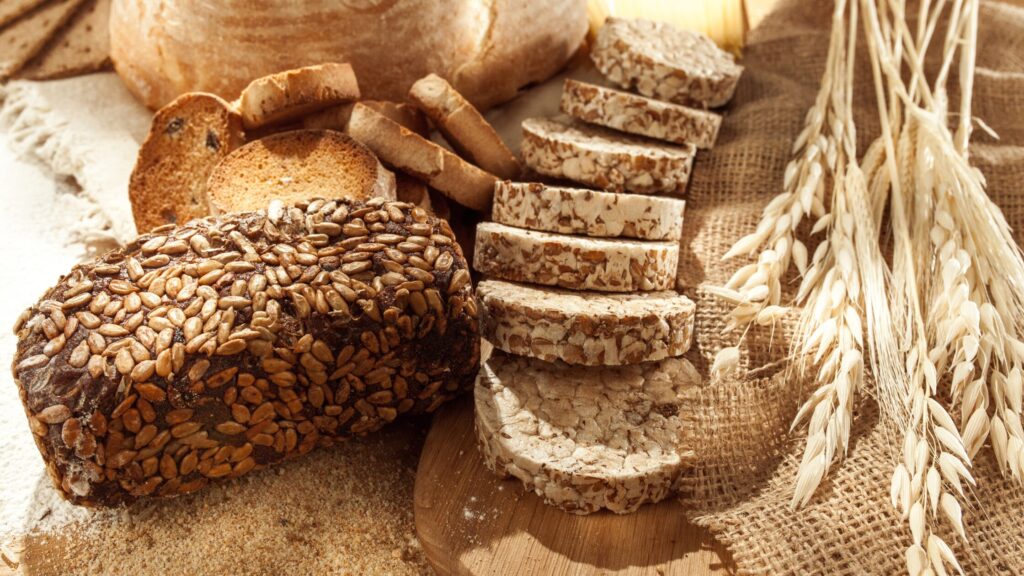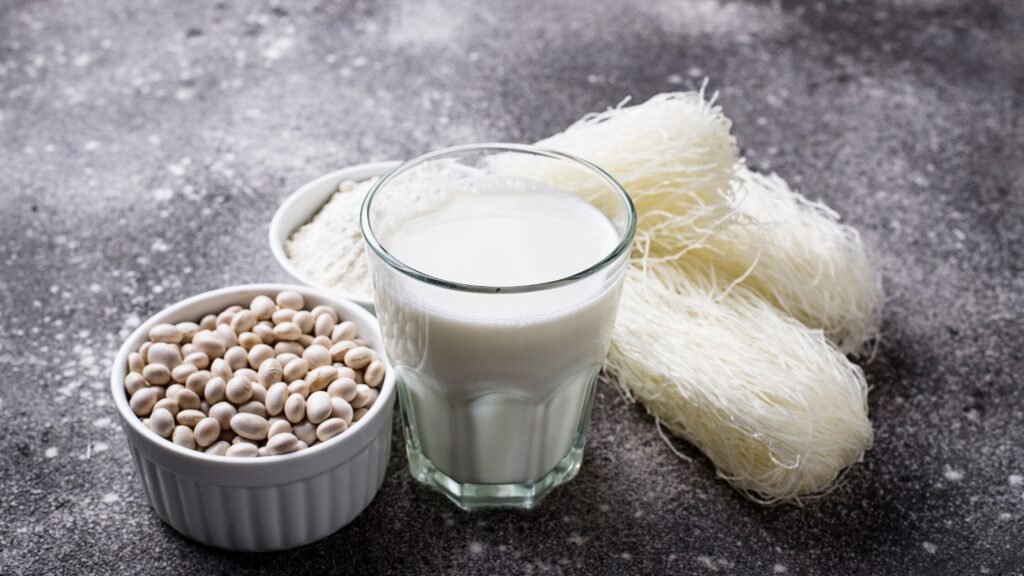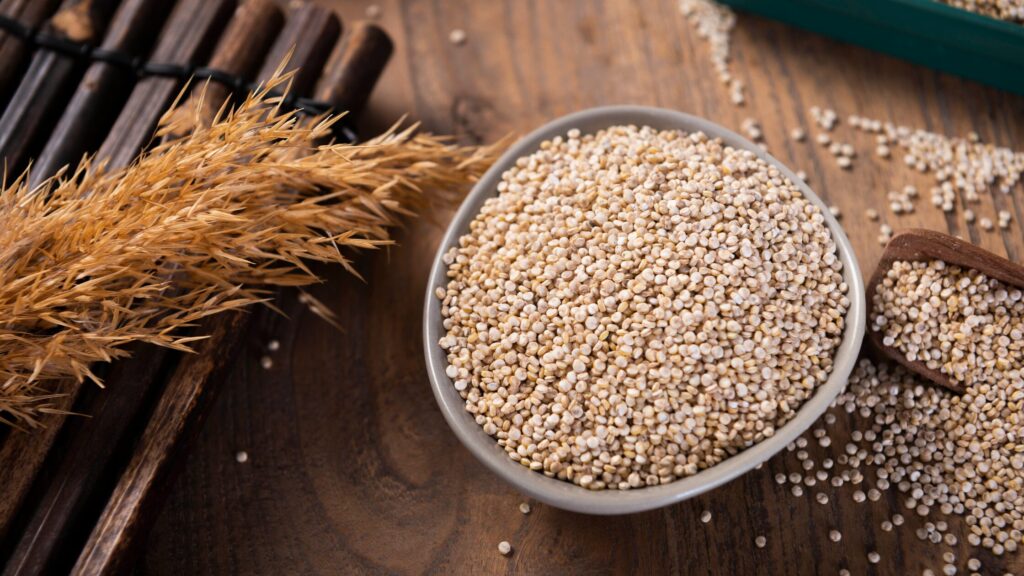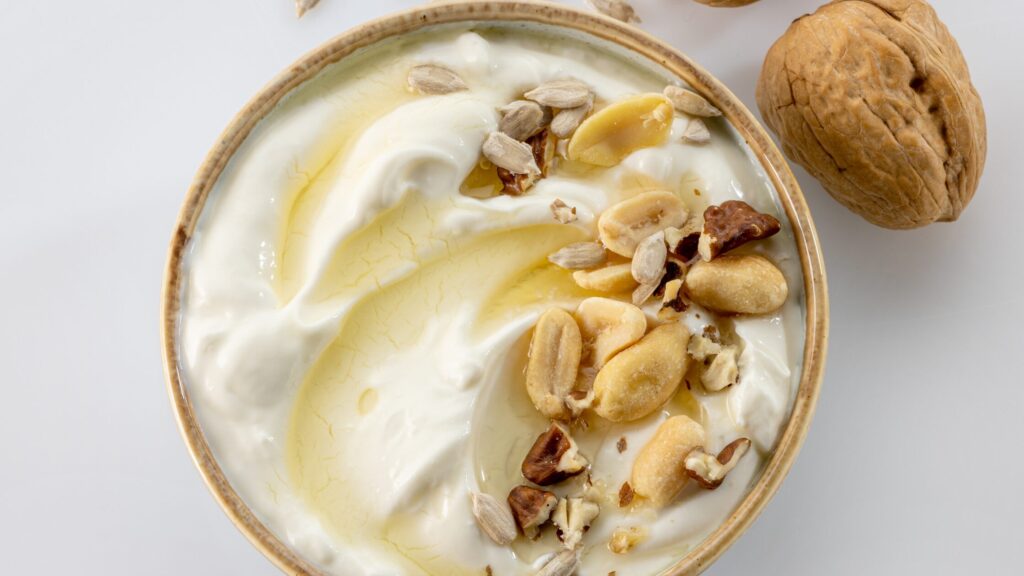Introduction
A gluten and dairy-free diet involves eliminating foods that contain gluten and dairy from one’s daily intake. Gluten is a protein found in certain grains such as:
- Wheat
- Barley
- Rye
Dairy products are derived from milk and include:
- Cheese
- Butter
- Cream
This diet has gained increasing popularity among individuals for various reasons, including:
- Managing food intolerances
- Addressing autoimmune conditions like celiac disease
- Pursuing overall health improvements
Adopting a gluten and dairy-free diet can help alleviate symptoms for those with sensitivities and provide an alternative pathway for maintaining a balanced nutrition plan.
What is Gluten and Dairy?
1. What is Gluten?
Gluten is a protein predominantly found in grains such as wheat, barley, and rye. It gives dough its elastic texture, allowing it to rise and maintain its shape, which is why gluten is known for providing the chewy texture to products like bread, pasta, and pizza. While gluten is an integral component in food production, certain individuals need to avoid it due to health reasons.
Celiac Disease: A serious autoimmune disorder where ingesting gluten can lead to damage in the small intestine. People with celiac disease must strictly follow a gluten-free diet to manage their condition. Learn more about celiac disease
Gluten Intolerance/Sensitivity: Individuals who experience discomfort, such as bloating or abdominal pain, after consuming gluten might have gluten sensitivity or intolerance. While the symptoms may not cause intestinal damage, avoiding gluten can help alleviate these symptoms.

2. What is Dairy?
Dairy refers to products made from milk, which include a wide range of foods such as cheese, butter, yogurt, cream, and milk itself. These products are key sources of calcium and vitamins like D and B12. However, many people choose to avoid dairy products due to health concerns such as lactose intolerance or allergies.
Lactose Intolerance: A common condition where individuals have difficulty digesting lactose, the sugar found in milk and dairy products. This happens when the body lacks sufficient lactase enzyme needed to break down lactose, leading to symptoms like bloating, gas, and diarrhea upon consuming dairy.
Dairy Allergies: Unlike lactose intolerance, a dairy allergy involves the immune system and can trigger reactions ranging from mild to severe, including hives, digestive problems, and even anaphylaxis. People with dairy allergies must completely avoid all dairy products to prevent adverse health effects.
Chart: Gluten vs. Dairy Elimination
| Aspect | Gluten-Free | Dairy-Free |
| Products Eliminated | Breads, pastas, pizzas, baked goods | Milk, cheese, butter, yogurt, cream |
| Primary Protein/Sugar | Gluten | Lactose |
| Common Reasons to Avoid | Celiac disease, gluten intolerance/sensitivity | Lactose intolerance, dairy allergies |
| Nutritional Considerations | May need alternative sources of fiber and B-vitamins | May need alternative sources of calcium and vitamin D |
This chart aids in understanding the differences and similarities between gluten and dairy elimination, helping individuals make informed dietary choices based on their health needs.
What is a Gluten and Dairy-Free Diet?
A gluten and dairy-free diet involves eliminating both gluten-containing and dairy-containing foods from one’s diet. By removing these two groups of foods, individuals can focus on consuming other nutrient-dense alternatives that do not trigger adverse reactions.
Health Reasons for Following a Gluten and Dairy-Free Diet
- Managing Digestive Issues: For many people, consuming gluten or dairy can lead to uncomfortable digestive problems such as bloating, gas, and diarrhea. Eliminating these from the diet can help alleviate such symptoms and improve digestive health.
- Reducing Inflammation: Some individuals experience inflammation as a result of consuming gluten or dairy. A diet free from these elements can help reduce this inflammation, leading to decreased joint pain and a general improvement in chronic inflammatory conditions.
- Improving Skin Conditions: Skin issues such as eczema, acne, and dermatitis can sometimes be exacerbated by gluten and dairy. Removing these foods from the diet has been reported to clear up skin and improve complexion for some individuals.
- Addressing Autoimmune Disorders: Beyond celiac disease, other autoimmune disorders may also benefit from a gluten and dairy-free diet. By reducing potential triggers from the diet, individuals may experience fewer autoimmune flare-ups and better manage their conditions.
Adopting such a diet requires careful planning to ensure nutritional balance and a diverse intake of essential nutrients to maintain overall health and well-being.

Nutritional Considerations for a Gluten and Dairy-Free Diet
Adopting a gluten and dairy-free diet requires vigilance to maintain adequate nutrition. Here are some important considerations to ensure a well-rounded dietary plan:
1. Sources of Protein
- Legumes: Chickpeas, lentils, and beans provide robust protein options.
- Nuts and Seeds: Almonds, sunflower seeds, and chia seeds are nutrient-rich.
- Meat Alternatives: Tofu and tempeh can substitute for traditional protein sources.
2. Vitamins and Minerals
- Calcium and Vitamin D: Almond milk, fortified plant milks, and leafy greens can supply these nutrients.
- B-vitamins: Quinoa, buckwheat, and fortified gluten-free cereals can ensure B-vitamin intake.
- Iron and Magnesium: Spinach, pumpkin seeds, and quinoa are excellent sources.
3. Fiber Intake
- Whole Grains: Brown rice, quinoa, and gluten-free oats are high in fiber.
- Fruits and Vegetables: Crucial for digestion and additional fiber; incorporate a variety of colors and types.
Gluten and Dairy-Free Food Alternatives
Finding suitable substitutes is crucial for those on a gluten and dairy-free diet:
- Grain Substitutes: Quinoa, amaranth, and rice are gluten-free options.
- Dairy Alternatives: Coconut milk, almond yogurt, and cashew cheese are viable replacements.
Importance of Label Reading
It’s essential for individuals following this diet to become adept at reading food labels. Many processed foods contain hidden gluten or dairy components under different names, making it important to scrutinize ingredient lists carefully.
Monitoring Balanced Nutrition
While eliminating gluten and dairy, it’s vital to ensure balanced nutrition by choosing a diverse range of foods. Consulting a nutritionist can aid in crafting a diet plan that meets all nutrient needs while accommodating individual health conditions.
Aspect | Gluten-Free | Dairy-Free |
| Products Eliminated | Breads, pastas, baked goods | Milk, cheese, butter |
| Key Nutrients | B-vitamins, fiber | Calcium, vitamin D |
| Common Substitutes | Quinoa, gluten-free cereals | Almond milk, cashew cheese |
| Monitoring Needs | Label reading, fiber sources | Calcium-rich alternatives |
This table summarizes key aspects of maintaining a gluten and dairy-free diet, offering clarity on dietary management and nutrient intake.
Benefits of a Gluten and Dairy-Free Diet
1. Improved Digestion
- Alleviation of Symptoms: For individuals with gluten or dairy intolerances, consuming these substances can lead to uncomfortable digestive symptoms such as bloating, gas, and diarrhea. By eliminating gluten and dairy from their diet, many find significant relief and a reduction in these adverse digestive effects.
- Gut Health Enhancement: Removing these potential irritants can contribute to a healthier gut environment, aiding in the balance of gut flora and promoting overall digestive well-being.
- Increased Energy Levels: With improved digestion, the body can efficiently process and absorb nutrients, leading to enhanced energy levels and reduced fatigue commonly associated with digestive discomfort.
2. Reduced Inflammation
- Joint Pain Relief: For individuals sensitive to gluten or dairy, consuming these foods can trigger inflammatory responses that lead to joint pain. Cutting out these inflammatory foods may alleviate discomfort and improve mobility.
- Decreased Frequency of Headaches: Some people experience chronic headaches as a result of inflammatory reactions to gluten and dairy. Eliminating these foods from the diet can help reduce the severity and frequency of headaches.
- Combatting Fatigue: Inflammation caused by dietary triggers like gluten and dairy can lead to feelings of constant fatigue. By removing these from the diet, individuals may notice increased energy levels and a reduction in tiredness.
- Better Skin Health
- Reduction in Skin Issues: Skin conditions such as eczema, acne, and rosacea can often be linked to food sensitivities, including gluten and dairy. By eliminating these potential irritants, individuals may notice a significant improvement in their skin health. Many report clearer skin and a reduction in flare-ups as the body no longer reacts to these common allergens.
- Enhancement of Complexion: A gluten and dairy-free diet can aid in reducing inflammation, a common contributor to various skin issues. This reduction not only helps in managing existing conditions but can also enhance overall skin complexion, leading to smoother and healthier-looking skin.
- Weight Management
Facilitating Weight Loss: Transitioning to a gluten and dairy-free diet often involves a shift towards consuming whole, unprocessed foods, such as fruits, vegetables, lean proteins, and whole grains. These healthier food choices can help individuals manage their weight more effectively, as they are typically lower in calories and higher in essential nutrients.
Balanced Nutrition: By cutting out processed foods that often contain hidden gluten and dairy, individuals simplify their diets, potentially leading to better eating habits and weight management. This approach may encourage mindful eating and portion control, both of which are essential components of a sustainable weight management plan.

What Foods to Avoid on a Gluten and Dairy-Free Diet
1. Gluten-Containing Foods
Individuals on a gluten-free diet need to avoid a variety of foods that typically contain gluten. These include:
- Bread: Such as baguettes, sandwich bread, and rolls.
- Pasta: Including spaghetti, macaroni, and noodles.
- Cereals: Many breakfast cereals contain wheat or barley.
- Baked Goods: Cakes, cookies, pastries, and muffins often contain gluten.
- Processed Snacks: Crackers, chips, and pretzels might use flours containing gluten.
2. Dairy-Containing Foods
Similarly, a dairy-free diet excludes all foods made from or containing milk. Items to avoid include:
- Milk: Whole, skim, or powdered forms.
- Cheese: All types, including hard, soft, and cream cheeses.
- Yogurt: Including regular, Greek, and flavored varieties.
- Butter: As well as margarine and ghee, which contain dairy solids.
- Cream-Based Sauces: Such as Alfredo, bechamel, and other cream-based dishes.
3. Hidden Sources of Gluten and Dairy
Navigating a gluten and dairy-free diet can be challenging due to hidden sources in processed foods, sauces, and seasonings. Here are some tips for effective label reading:
- Scan for “Contains” Statements: Many labels will include a statement if the product contains allergens like wheat or milk.
- Watch for Modified Food Starch: This may contain gluten unless labeled as made from corn.
- Check for Casein or Whey: These are milk derivatives often used in processed foods.
- Be Cautious with “Natural Flavors”: These can sometimes include dairy or gluten components.
- Look for Gluten-Free Certification: This can offer added assurance for avoiding gluten contaminants.
| Category | Foods to Avoid | Hidden Sources to Beware Of |
| Gluten | Bread, Pasta, Cereals, Baked Goods, Processed Snacks | Sauces, Gravies, Condiments |
| Dairy | Milk, Cheese, Yogurt, Butter, Cream-Based Sauces | Natural Flavors, Processed Foods |
By being vigilant with food labels and understanding the potential sources of gluten and dairy, individuals can better adhere to a diet that excludes these items.
What Can You Eat on a Gluten and Dairy-Free Diet?
1. Naturally Gluten-Free and Dairy-Free Foods
- Fresh Fruits and Vegetables: All fresh produce is naturally free from gluten and dairy, making them a staple in a balanced diet. Enjoy a wide array, including apples, berries, leafy greens, broccoli, carrots, and avocados.
- Lean Meats and Poultry: Choose natural, unprocessed meats such as chicken, turkey, beef, and pork, all of which are free from gluten and dairy when not breaded or marinated in gluten-containing sauces.
- Fish and Seafood: Enjoy fresh fish and shellfish for a source of high-quality protein without gluten or dairy. Varieties like salmon, tuna, shrimp, and scallops fit perfectly into this diet.
- Nuts and Seeds: Raw almonds, walnuts, chia seeds, and flaxseeds are nutritious snacks packed with healthy fats and protein, making them an excellent choice for those avoiding gluten and dairy.
- Legumes: Beans, lentils, and chickpeas are rich in fiber and plant-based protein, adding heartiness and nutrients to gluten and dairy-free meals.
- Gluten-Free Grains: Incorporate grains like quinoa, rice, millet, and amaranth. These grains naturally do not contain gluten and provide essential carbohydrates and nutrients.
- Healthy Oils and Fats: Olive oil, coconut oil, and avocado oil are perfect for cooking and dressing salads, adding flavor without gluten or dairy.
2. Gluten and Dairy-Free Alternatives
Navigating a gluten and dairy-free diet can be made easier with the following alternatives for popular gluten and dairy products:
- Gluten-Free Bread: Several brands offer gluten-free bread made from rice flour, almond flour, or tapioca flour. Look for options from reputable manufacturers that ensure excellent taste and texture similar to regular bread.
- Gluten-Free Pasta: Replace traditional pasta with options made from rice, corn, or quinoa. These alternatives provide a comparable texture and are available in various shapes like spaghetti, penne, and fusilli.
- Dairy-Free Milk: There are numerous plant-based milk alternatives such as almond milk, coconut milk, oat milk, and soy milk. These milks can often be used interchangeably with cow’s milk for drinking, cooking, and baking.
- Dairy-Free Yogurt: Yogurts made from almond milk, coconut milk, or cashew milk offer a creamy texture and are often enriched with probiotics.
- Dairy-Free Cheese: Various plant-based cheese products are available, made from nuts, coconut oil, or soy. They come in different forms, including slices, shreds, and blocks, to suit various needs.
- Gluten and Dairy-Free Snacks: Enjoy a range of snacks like rice crackers, popcorn, or vegetable chips that don’t contain gluten or dairy. Always check the labels to ensure they are free of cross-contaminants.
3. Plant-Based Sources of Calcium and Nutrients
- Achieving nutritional needs without dairy is possible with plant-based foods rich in essential nutrients.
- Leafy greens like kale, collard greens, and bok choy are excellent calcium sources and also offer vitamins A, K, and C.
- Fortified plant milks (almond, soy, oat) contain added calcium, comparable to cow’s milk.
- Tofu made with calcium sulfate boosts calcium intake and provides valuable protein.
- Chia and sesame seeds are calcium-rich and can be added to salads or smoothies.
- Beans and lentils are good sources of iron, fiber, and protein, supporting a balanced diet.
- Diversifying plant-based food variety allows individuals to meet nutritional needs without dairy.
Tips for Following a Gluten and Dairy-Free Diet
1. Plan Your Meals
Planning and preparing gluten and dairy-free meals at home can help avoid cross-contamination and ensure a balanced diet. Setting aside time each week to outline meals allows for better control over ingredients and nutritional content. Stock your pantry with staples like gluten-free grains, plant-based milks, and fresh produce to make meal preparation easier.
2. Read Food Labels Carefully
Checking ingredient labels is crucial in avoiding hidden sources of gluten and dairy. Look for clear declarations of allergens and be aware of terms such as casein, whey, or malt, which may indicate the presence of milk or gluten. Opt for products with gluten-free certification for added assurance and consistency in your diet.
3. Try New Recipes
Experimenting with new gluten and dairy-free recipes can make your diet more enjoyable and varied. Try baking gluten-free muffins or cookies using almond or coconut flour, or create rich, creamy dairy-free smoothies with fruits and almond milk. Exploring diverse cuisines can offer inventive ways to enjoy your dietary restrictions.
4. Dining Out
Eating out on a gluten and dairy-free diet involves some precautions, but it can still be enjoyable. Research and select restaurants that offer allergen-friendly menus. Calling ahead to inquire about menu options and preparation practices helps ensure meals meet dietary needs. Communicating your dietary preferences to the staff can aid in avoiding cross-contact with allergens.
Conclusion
Adopting a gluten and dairy-free diet offers a multitude of health benefits, particularly for those with sensitivities or allergies to these components. By focusing on fresh produce, lean meats, seafood, nuts, seeds, legumes, and gluten-free grains, individuals can create a balanced diet rich in nutrients without compromising taste and satisfaction. Key alternatives like gluten-free bread, pasta, and dairy-free milk provide convenient swaps for traditionally gluten or dairy-containing products, allowing for diverse and satisfying meal options. When approached mindfully, this diet can enhance overall well-being, supporting heart health, energy levels, and digestive comfort.
However, it’s essential to consult with a healthcare professional when embarking on any new dietary changes, especially if you have underlying health conditions or specific dietary needs. Professional guidance ensures the diet is nutritionally complete and safe for your individual circumstances.
For inspiration and creative ideas, we invite you to explore a wide range of gluten and dairy-free recipes available on our website. These recipes not only support a balanced lifestyle but also add variety and excitement to your meal planning journey.




